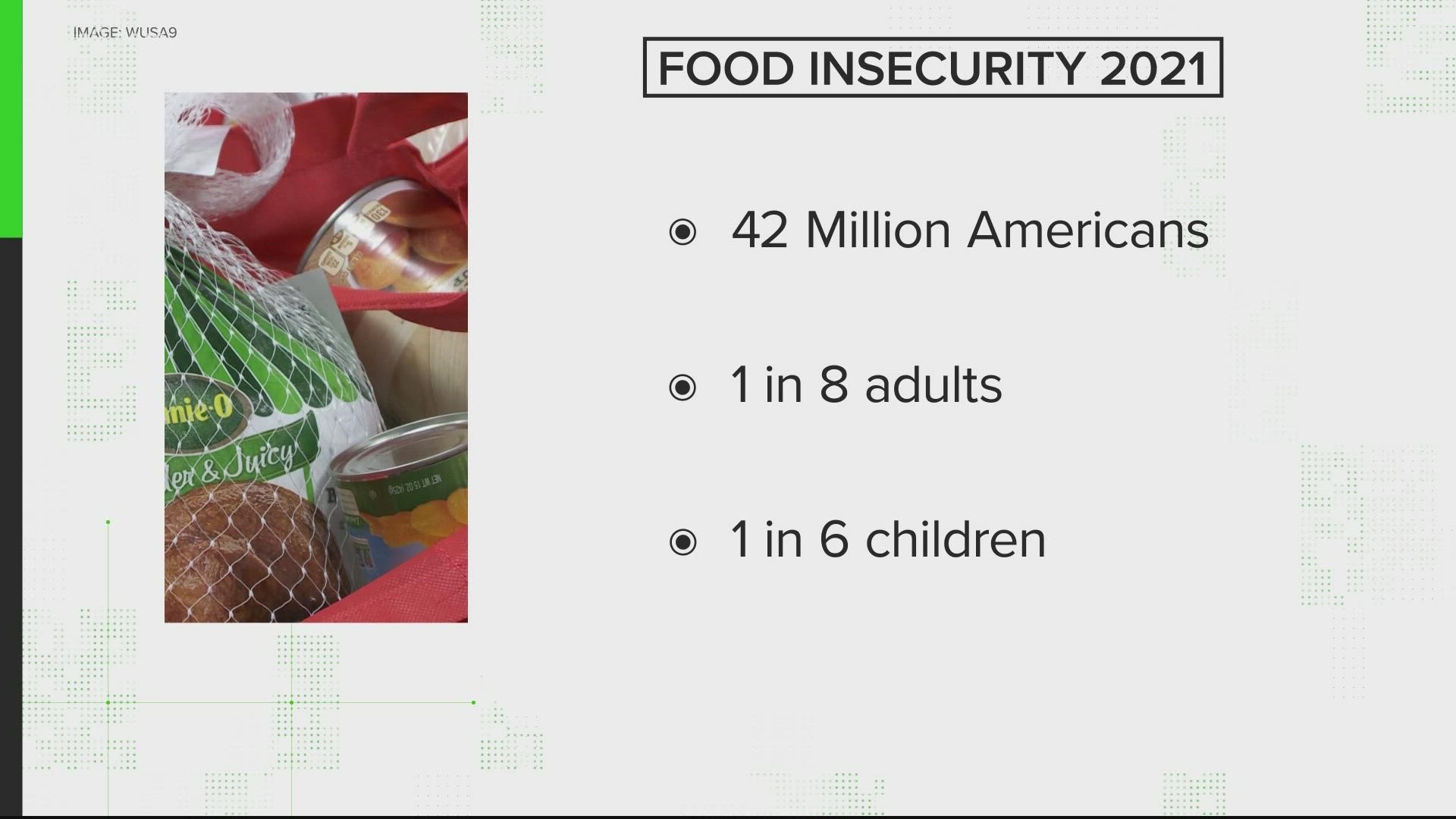WASHINGTON D.C., DC — Hunger advocates report that a record number of people are food insecure because of the pandemic -- a problem that they say will take 2 to 3 years to recover from.
QUESTION
Has the pandemic pushed even more people into hunger?
ANSWER
SOURCES
Feeding America, the nation’s largest hunger relief organization.
Radha Muthiah President and CEO of the Capital Area Food Bank
Wanda Lockridge, DC Councilmember Trayon White’s Chief of Staff
WHAT WE FOUND
For a dozen years, residents of D.C.’s Ward 8 knew they could get a free turkey at Union Temple Baptist Church.
“We are serving up 2500 turkeys,” said Councilmember Trayon White's Chief of Staff, Wanda Lockridge. "And we’re at three different locations.”
On a chilly Tuesday afternoon, Washingtonians walked away with groceries for their Thanksgiving dinner and across the street picked up a hot meal to go sponsored by Building Blocks, DC.
“Hunger exists in every single zip code across the greater Washington area,” said Radha Muthiah, Capital Area Food Bank CEO.
According to Muthiah, the Capital Area Food Bank provided 75 million meals to those who needed them in 2020. That’s 2.5 times more than what they provided before the COVID-19 pandemic began.
“While the need is a bit lower this year, it's still 45 million meals worth of food that's going out into the community,” Mutthiah said. "That's just about a 50% increase from pre-pandemic times.”
The nonprofit Feeding America projects 42 million people have experienced food insecurity in 2021. That means 1 in 8 adults and 1 in 6 children don’t have enough to eat.
Muthiah said the work to feed our neighbors is a long-term mission, as it will several years for those families to get back on their feet.
“Our projections with a lot of data suggest that it truly is, I mean, it sounds awful to say, another two or three years," she said. "But that is what it's going to be."

